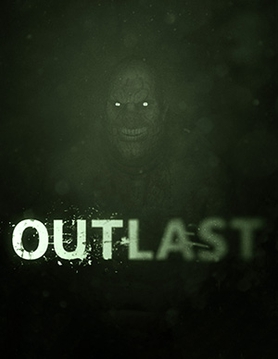The Beginning
- During the Golden Age of Hollywood (1930 - 1960), most film directors worked for mone of the major studios
- French film critics noticed some American Directors made films that were to their own personal visions and were "auteurs" (authors of their own films). Examples being Alfred Hitchcock and Orsen Welles
- The first American New Wave started outside of Hollywood by independent filmmakers in New York.
- Little Fugitive (1953) by Ray Ashley, Morris Engel & Ruth Orkin
- Film was an influence on the French New Wave with Francois Truffaut stating - "Our New Wave would never have come into being if it hadn't been for the young American Morris Engel, who showed us the way to independent production with this fine movie."
New York New Wave
Lionel Rogosin made On The Bowery (1956) - Neorealist view of New York that has a mixture of documentary and scripted footage - https://www.youtube.com/watch?v=CHuYXEwCk_U
Robert Frank made Pull My Daisy (1959) - https://vimeo.com/92403607
John Cassavetes made Shadows (1959) - https://www.youtube.com/watch?v=VZx-I0wJ_8s
Shirley Clarke made The Connection (1961) - A mixture of cinema verite and French New Wave. Her film depict drug addicts, sex workers and different races mixing together - https://www.youtube.com/watch?v=frOgv6UNGi
New Hollywood
- A new generation of young filmmakers emerged in the late 1960s and early 1970s
- Studios lost the right to own their own theatres (Paramount Antitrust case 1948) and they struggled to sell films to independent exhibitors and were losing their audiences and money as well as competing with television programs.
- Alfie - https://www.youtube.com/watch?v=L6j-EbvSS8g
- Georgy Girl - https://www.youtube.com/watch?v=u8YCQ8j55VM
- Blow up - https://www.youtube.com/watch?v=Zu0-keZ4KKY
Jack Velenti was made the new head of the MPAA in 1966 and the outdated production code that restricted film content was updated. This allowed new freedoms for filmmakers to make anti-authoritarian films which appealed to younger audiences.
Bonnie and Clyde (1967)\
- In 1863 Robert Benton and David Newman (writers for a New York magazine) wrote a script for Bonnie and Clyde (based on the American criminals who during the Great Depression, robbed and killed people) and managed to get the script to Francois Truffaut. Truffaut was to direct the film but pulled out to shoot Farenheit 451(1966). He passed on the project to Jean-Luc Godard who also pulled out in favour of shooting Alphaville(1966)
- Eventually, actor Warren Beatty read the script and decided to produce it and hired Arthur Penn to direct. The film was funded by Warner Brothers.
- Jack Warner disliked the rough cut and gave the film a limited release. The film also received bad reviews.
- The film however was well received in England. Beatty managed to get Warner Brothers to re-release the film and it became a success and nominated for Academy Awards.
- https://www.youtube.com/watch?v=3ACCpXaA-MU
- Director Mike Nichols won Oscar and film received multiple nominations
- Soundtrack consists of songs by Simon & Garfunkel
- Introduced the world to Dustin Hoffman
- Benjamin Braddock (Hoffman) has just finished college and is unsure of what to do with his future, when he becomes sexually involved with a friend of his parents, Mrs Robinson
- https://www.youtube.com/watch?v=XxJDOkr_UhE
Fritz The Cat (1971)
- Far from the traditional child-targeted animated films
- Ralph Bakshi believed that with all the changes in society and the new social power and economic freedom of the young people, it was time to take adult animation seriously.
- Taking the comic strip character created by Robert Crumb, he made what became the first X-rated American cartoon
- Fritz lives an alternative lifestyle among students in New York who experimented with free love, drugs and rock n roll
- https://www.youtube.com/watch?v=kf7diA3Rcp8
- http://www.dailymotion.com/video/x1jcfr_fritz-the-cat-1972-part-1_na
Provide Examples of scenes from Films or Animations that have evoked a scared or disturbing emotional response for you personally. Give two examples from early memory and two from recent memory. Describe your response to them then and now.
Early Memory
Harry Potter's Dementors scared me. Watched the movie when I was really young and the way it just flies around and sometimes appears out from no where gives me the creeps
Recent Memory
The film "The Boy" creeped me out until towards the end of the film. The way the film was centered around the doll was really creepy and how it moved on it's own. Growing up I never had a thing for dolls because when I was young, I remembered watching loads of "ghost adventure" series which revolved a lot around dolls. Even seeing a creepy looking doll will give me the creeps.
Another one was from a game called Outlast. Just the music, sound effect and the sudden jump scares made things really intense.
No comments:
Post a Comment